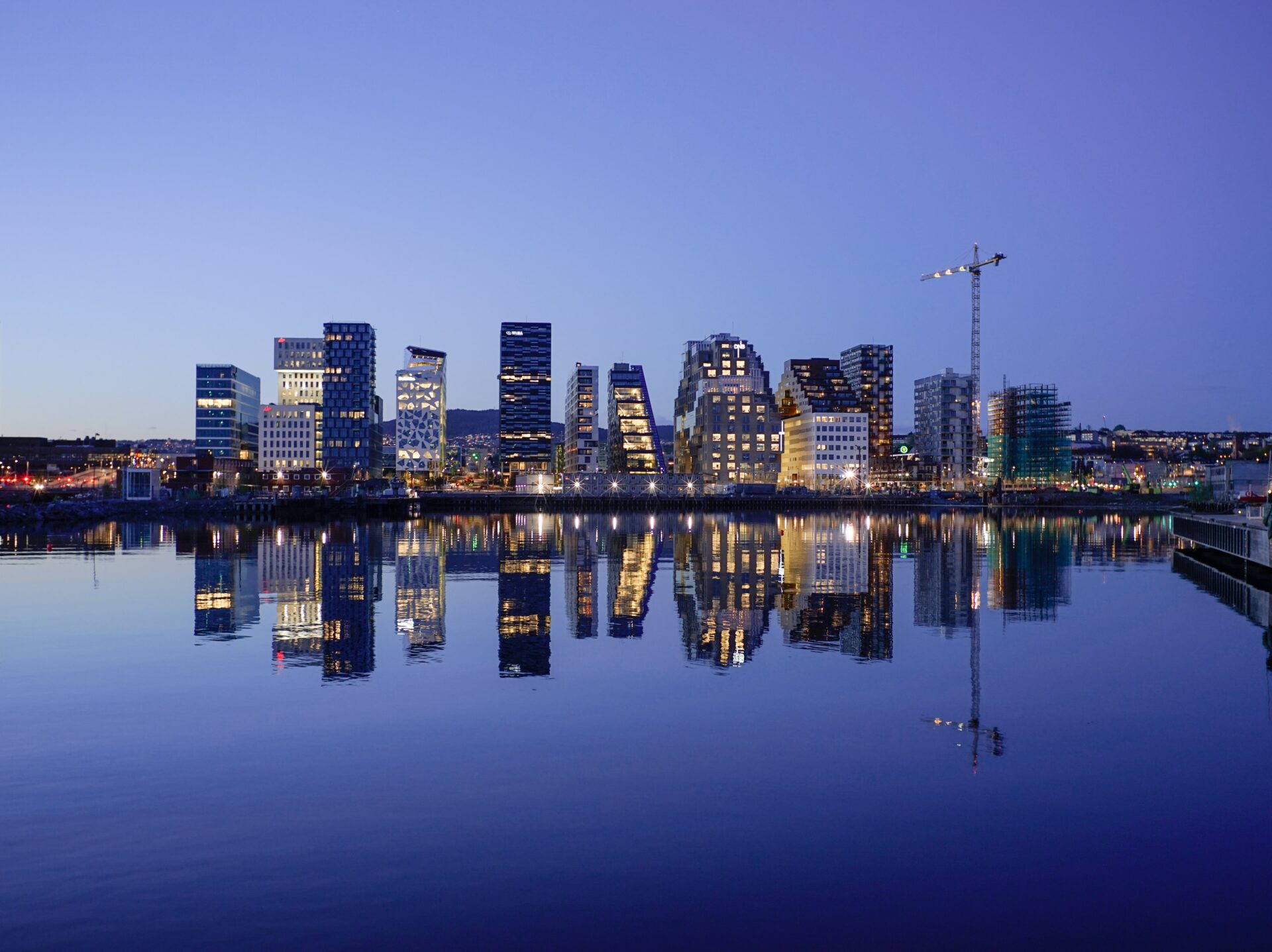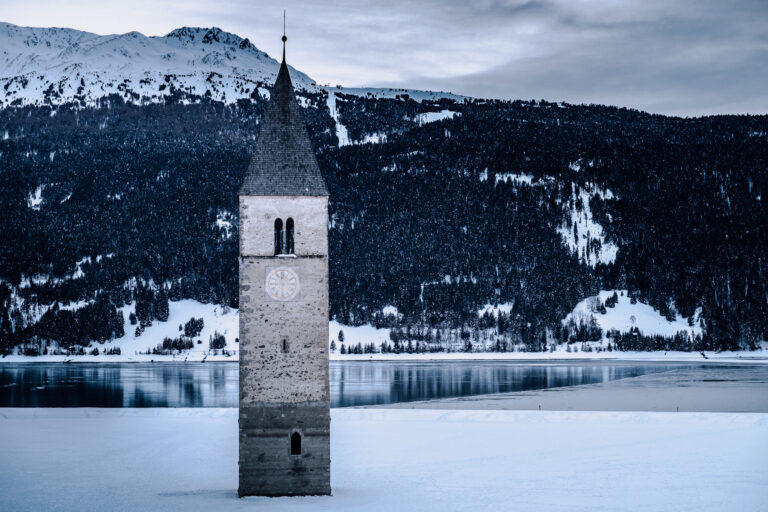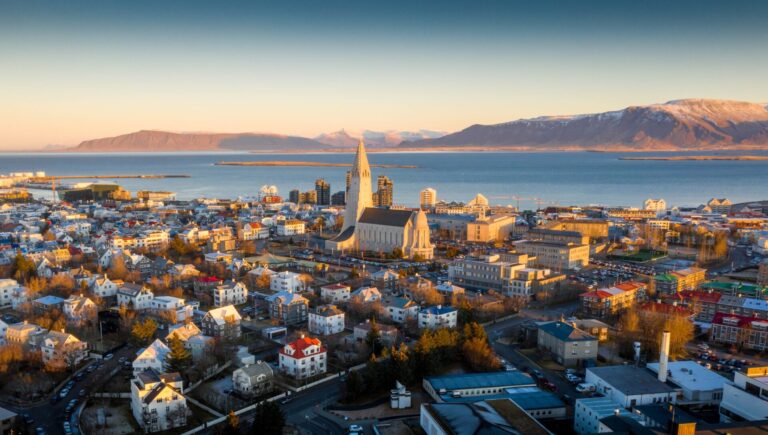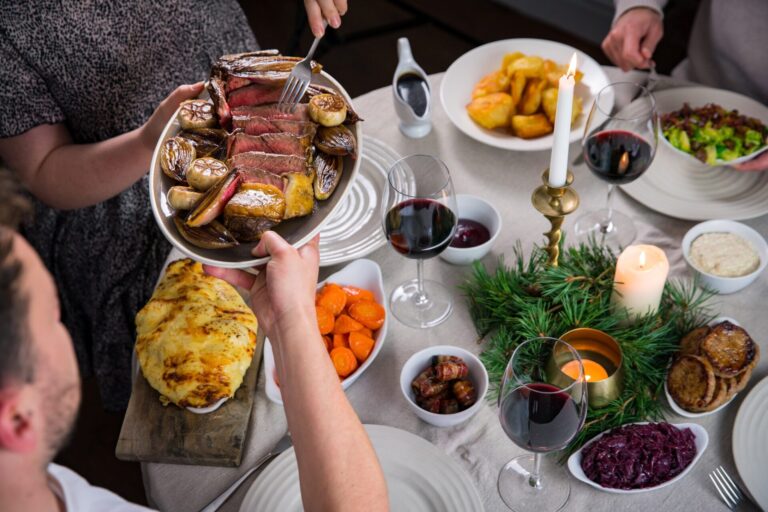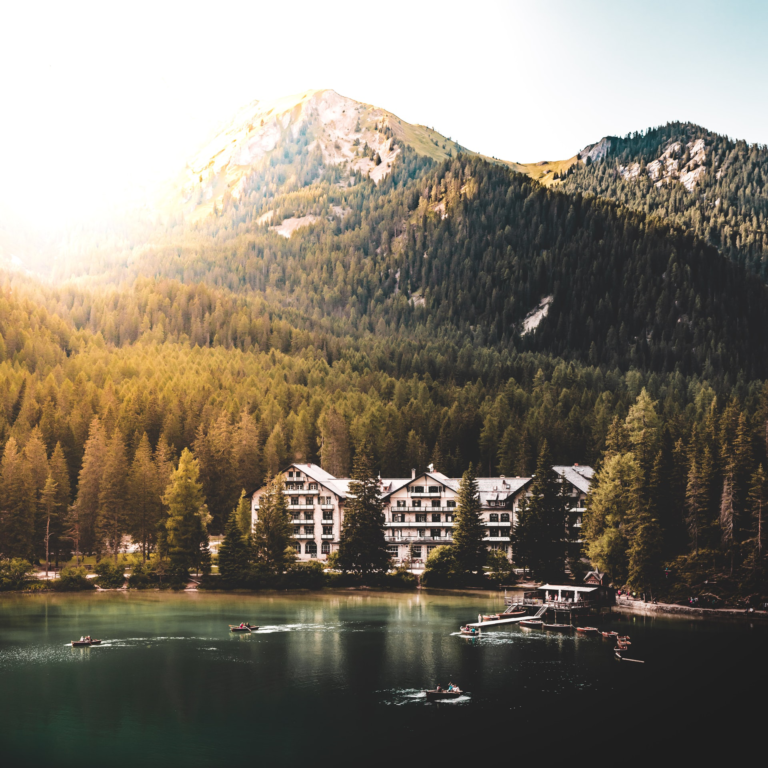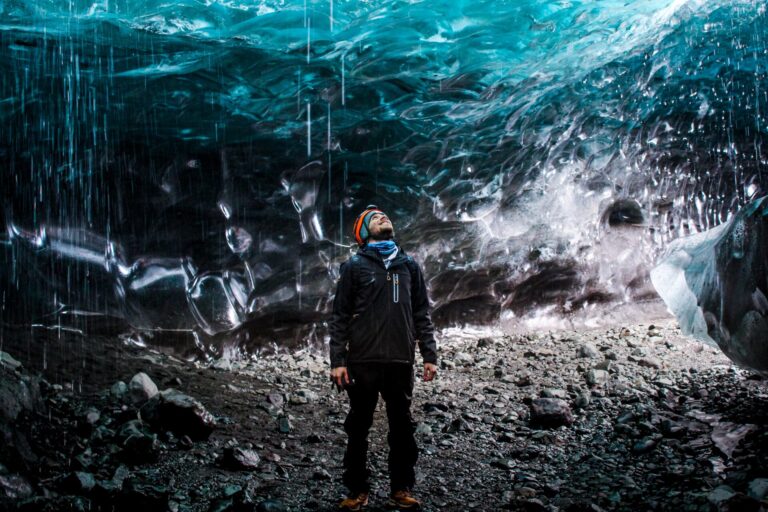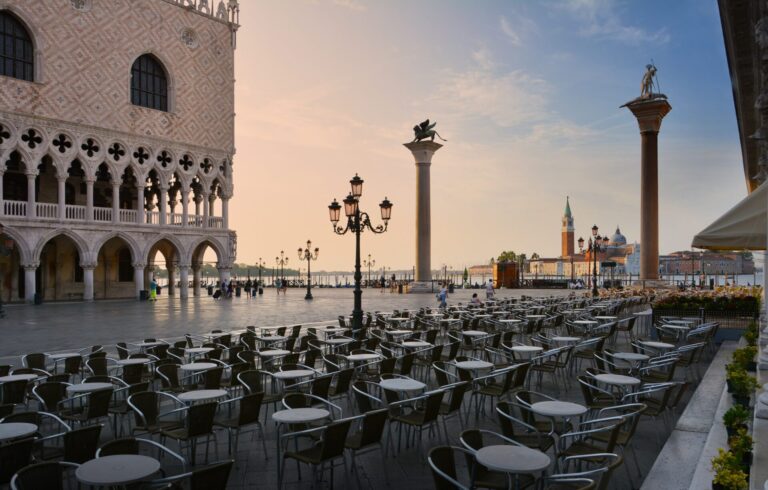Discover the Magic of Norway: the 23 best things to do in Oslo
Oslo, the capital and most populous city of Norway, is a destination that offers visitors a chance to experience this fascinating country’s rich history and culture. The city has a long and storied past, dating back to the Viking Age, and is home to many cultural and historical attractions that provide a glimpse into its past. From medieval castles to world-class museums and art galleries, Oslo offers visitors the opportunity to explore the city’s rich heritage and learn about its history and culture.
Next to its rich heritage, Oslo is also known for its vibrant arts and culture scene with several museums and galleries showcasing Norwegian and international art, and a number of festivals and events throughout the year, including the Oslo International Film Festival and the Oslo Jazz Festival.
The list of activities and things to do in Oslo is so long, that it can be overwhelming – especially for first-time visitors. That’s why we listed the 23 best things to do in Oslo.
Page Contents
Basic facts about Oslo
Before we dive into the most important things to do in Oslo, we want to walk you through a few of the most basic facts about the city that might impact your visit.
- The official language is Norwegian, but many residents speak English as a second language.
- The currency used in Oslo is the Norwegian Krone and not Euro.
- The city of Oslo has a well-developed public transportation system, including buses, trams, metro, and trains, making it super easy to navigate.
- The city is also known for its lively nightlife, with many bars, clubs, and pubs to choose from.
- The Oslo Pass is a popular option for visitors, providing free or discounted access to over 30 museums and attractions and free public transportation within the city.
- Many of the public transportation options, such as the metro, buses, and trams, offer special 24-hour or multi-day tickets at a discounted rate for tourists.
- The Arctic Circle Express, known as the longest nordic train journey, starts in Oslo and is the perfect start to your Scandinavian Interrailing experience. Make sure to read up on our interrail guide, if you’re not up-to-date with his phenomenon.
Things to do in Oslo
We’ve mentioned it already: Oslo is the capital of Norway, which means it has an enormous historical value and thus offers visitors a wide range of things to do and see, from exploring the city’s rich history and culture to enjoying the great outdoors.
In this article, we’ll take a look at some of the best things to do in Oslo, from visiting museums and art galleries to exploring the city’s parks and natural beauty.
The Oslo Opera House (Operaen)
The Oslo Opera House is the home of The Norwegian National Opera and Ballet and was opened in 2008. Since its opening, it has been known as one of the world’s most modern and innovative opera houses.
The building is designed with a sloping, white marble exterior that appears to rise from the water and features state-of-the-art acoustics and technology. The main auditorium has seating for 1,364 people, and the building also includes several smaller venues, rehearsal, and office space.
The Opera House is the perfect destination for cultural events and an amazing landmark for tourists who like sightseeing and architecture!



The Norwegian Parliament (Stortinget)
The Norwegian Parliament, also known as Stortinget, is the supreme legislature of Norway and is responsible for making laws and decisions on behalf of the Norwegian people. The Parliament is made up of 169 members, who are elected every four years through a system of proportional representation. The Parliament is led by the President of the Storting, who the members of the Parliament elect.
The Parliament building is located in the center of Oslo, near the Royal Palace, and is open to visitors; you can take guided tours of the building, which includes the main hall, the plenary chamber, and the offices of the members of Parliament.
Akershus Fortress (Festung Akershus)
Akershus Fortress is a medieval castle built in the late 1290s by King Håkon V in order to protect the city and the kingdom from invasion and has been used as a royal residence, a prison, and a military base throughout its history.
The fortress features a main castle, with a defensive wall surrounding it and several towers, including the Håkon Hall, a large banquet hall built for King Håkon V, and the Aula, the main hall of the fortress, which served as the king’s residence.
Nowadays, The fortress houses several museums, including the Akershus Fortress Museum, which tells the story of the fortress’s history, and the Resistance Museum, which tells the story of Norway during World War II.
The fortress is open to visitors year-round, and guided tours are available. The fortress offers a panoramic view of the city and the fjord, and it is also a popular spot for events and cultural performances.
The Oslo City Hall (Rådhuset)
The Oslo City Hall (Rådhuset) is the administrative center of the city and it houses the offices of the city council and the mayor. The building was designed in the Scandinavian Brick Gothic style and was completed in 1950.
The City Hall is most famous for the annual Nobel Peace Prize ceremony, which is held in the main hall of the building every December. The prize is awarded to individuals or organizations who have contributed significantly to the cause of peace.
The City Hall also features several other notable spaces, such as the Banquet Hall, which is used for official events and receptions, and the City Council Chamber, where the city council holds its meetings. The City Hall is open to visitors and has several options for guided tours.
Royal Palace (Koningliches Schloss)
Kongehuset is the Royal Palace, which means it is the residence of the Norwegian monarch and serves as the official residence of King Harald V and Queen Sonja. The palace was originally built in the early 19th century as a residence for the Norwegian royalty.
The palace is located on a hill in the heart of Oslo and offers a panoramic view of the city and the Oslofjord. The palace is open to visitors during summer, and visitors are able to take guided tours through the palace’s main hall, the royal apartments, and the palace chapel. The palace also includes several museums, such as the Royal Palace Museum, which tells the story of the Norwegian monarchy, and the Palace Park, which is a popular spot for picnics and outdoor activities.
It’s important to note that the palace is not open to visitors all year round; the opening times are limited, and guided tours are the only way to visit the palace. You best check the official website for more information.
Outland bookstore
Outland is a well-known bookstore specializing in comics, graphic novels, manga, and other related items. The bookstore was founded in 2001 and carries a selection of related merchandise (such as t-shirts, posters, and action figures) next to its wide range of comics and graphic novels.
Next to selling books, Outland also hosts several events such as book signings, meet-and-greets with comic book creators, and workshops on comics and graphic novels. The bookstore is located in the Grünerløkka neighborhood of Oslo and is open all year round.
Frogner Park
Frogner Park is a large public park that covers an area of about 80 hectares. It is one of the more popular attractions in Oslo as it is home to several important cultural and historical sites, including the famous Vigeland Sculpture Park and the Frogner Manor.
The park also features several other attractions, including the Frogner Manor, a historic building that houses a museum and an art gallery, and several beautiful gardens and a large lake, a popular spot for boating and picnics.
Vigelandsanlegget Sculpture Park
Vigelandsanlegget is a sculpture park located in Frogner Park, and might be the most popular tourist attraction in the city, as it is the most visited park in Norway.
The park was initially created by the sculptor Gustav Vigeland, and it features over 200 sculptures in bronze, granite, and cast iron. They represent human figures in various poses and emotions, and they are organized into several themed areas, such as the Bridge with its 36 sculptures representing the cycle of life, the Monolith Plateau with its impressive 46-foot tall Monolith sculpture, and the Fountain which is a representation of the human desire for immortality.
The sculptures are set among lush gardens and greenery, and the park is a popular spot for picnics, relaxing, and enjoying the outdoors – making it one of the most relaxing things to do in Oslo.

Nationalmuseum
The National Museum of Art, Architecture, and Design is one of the largest art museums in Norway and is home to a wide range of artworks and artifacts, including works by Norwegian and international artists, decorative arts, and design objects. The collection spans from the Middle Ages to the present day and covers all major art movements.
The museum’s building is located in the city center, near the Royal Palace, and it was built in 1836. The building itself is an architectural landmark, and includes several temporary exhibitions throughout the year, providing visitors an opportunity to see the latest art, design, and architecture.
The museum’s collection also includes works by famous Norwegian artists such as Edvard Munch, J.C. Dahl, and Lars Hertervig. It also has an extensive collection of decorative arts, including textiles, furniture, and ceramics.
Next to its collections, the museum offers guided tours and workshops, making it one of the most fun things to do in Olso. Bonus: it is open to the public all year round.
The Norsk Folkemuseum (Norwegian Museum of Cultural History)
The Norsk Folkemuseum is the oldest and one of the largest open-air museums in the world, as it was founded in 1894. Nowadays it features more than 150 historical buildings that have been moved to the museum from various regions of Norway, providing a glimpse into the way of life, architecture, and culture of the people of Norway from the Middle Ages to the 20th century.
The museum’s collection includes traditional Norwegian houses, farms, churches, workshops, and other buildings. Visitors can explore the exhibitions and see how people lived and worked in the past, including their customs and traditions.
Next to its collection, the museum also offers a variety of activities and events throughout the year, such as workshops, demonstrations, and traditional festivals. It is a great place to learn more about the culture and history of Norway, and it is open to visitors all year round.
Barcode Project
The Barcode Project is a mixed-use development site located in the Bjørvika neighborhood and can best be described as a long, narrow strip of land stretching along the harbor front. The project was launched in the early 2000s with the aim of transforming the area into a new business and cultural district for the city.
On the site, several high-rise buildings can be found, each housing serval offices, apartments, and hotels, as well as a variety of cultural institutions and public spaces. The most notable buildings in the project include the Oslo Opera House, which is considered one of the most important architectural landmarks in the city, and the Munch Museum, which houses the largest collection of works by the famous Norwegian painter Edvard Munch.
The Barcode Project also includes several parks, plazas, and public spaces, such as the Tjuvholmen Sculpture Park, which features a collection of contemporary sculptures. The Barcode Project is considered an important development for the city as it transformed the area into an attractive and vibrant district that is a popular destination for both locals and tourists. Wandering around the neighborhood is one of the coziest things to do in Oslo.


Tjuvholmen Sculpture Park
We just mentioned it; the Tjuvholmen Sculpture Park is a contemporary sculpture park that was opened in 2013 as part of the Barcode Project and features a collection of sculptures by both established and emerging artists from around the world.
The park is located in a waterfront area, and it provides visitors with a unique opportunity to enjoy contemporary art in a beautiful and peaceful setting. The collections are spread over a mix of indoor and outdoor sculptures, and the collection is constantly evolving as new sculptures are added, and old ones are removed. The sculptures on display include works by artists such as Louise Bourgeois, Olafur Eliasson, and Anish Kapoor.
Next to their art collection, the park is a known spot for cultural events and performances, as it has a unique and dynamic space. And what makes it even more fantastic: the park is open to the public all year round.
The Munch Museum (Munchmuseet)
The Munch Museum, also known as Munchmuseet, is a museum dedicated to the works of the famous Norwegian painter, Edvard Munch. The museum holds the world’s largest collection of Munch’s works, including some of his most iconic pieces such as “The Scream” and “Madonna.”
The museum was opened in 1963 and was designed to house the extensive collection of Munch’s works that were donated to the city of Oslo by the artist himself. The collection includes over 28,000 works spanning Munch’s entire career, including paintings, prints, drawings, and photographs.
The exhibitions provide an in-depth look into the life and work of Edvard Munch, showcasing not only his most famous paintings but also his lesser-known works, including his photographs and drawings. The museum also hosts temporary exhibitions and events throughout the year, highlighting different aspects of Munch’s work and providing visitors with a deeper understanding of the artist.
The Botanical Garden (Botanisk Hage)
The Botanical Garden is located in the Tøyen neighborhood of Oslo and was founded in 1814, making it the oldest botanical garden in Norway.
The garden itself covers an area of about 16 hectares, which means it features a wide variety of plants and flowers from all over the world, including a rose garden, a rock garden, a rhododendron garden, a lily pond, a herb garden, and a greenhouse with tropical plants. The garden also has a collection of medicinal plants, a collection of wild berries, and an orchard of old apple varieties.
Ekerbergparken Sculpture Park
Ekebergparken is another sculpture park located in the Ekeberg neighborhood of Oslo and was opened in 2013. It is known for its collection of sculptures by both established and emerging artists from around the world.
Its collection features over 60 sculptures, including works by famous artists such as Salvador Dalí, Auguste Rodin, and Pablo Picasso. The park also features several sculptures by the Norwegian artist, Gustav Vigeland, who is considered one of the most important sculptors of the 20th century.
Another aspect that makes the park so special is the fact that it is situated on a hillside with beautiful views over the city and the fjord, and features several pavilions, including a café and a restaurant, a visitor center, and an exhibition space.
Akerselva
The Akerselva is a river in Oslo that starts from Maridalsvannet lake and runs through the city until it flows into the Oslofjord. Over the years, the river has played an important role in the city’s history and development, as it has been a source of power for industry and a source of drinking water for the city’s inhabitants.
Nowadays, the river is known for its beautiful natural surroundings as it houses several recreational areas, hiking trails, and cycling paths – making it a popular destination in Oslo for outdoor activities. Next to these activities, there are also several historic sites and cultural landmarks located next to the river, such as the old watermills, the historic power plants, and the industrial heritage sites.
Oslo Cathedral (Oslo Domkirke)
The Oslo Cathedral, known by locals as the Oslo Domkirke, is a cathedral located in the center of Oslo, and the main church of the Church of Norway, as it serves as the seat of the bishop of Oslo.
The cathedral was built in the 19th century and is one of the city’s most important architectural and historical landmarks. This is something you can admire from the inside as well, as the Oslo cathedral features a large nave, a high ceiling, beautiful stained-glass windows, and several interesting works of art, including frescoes and sculptures, and altarpieces. It also has an impressive pipe organ and a beautiful rose window.
The National Theatre (Nationaltheatret)
The National Theatre (Nationaltheatret) is a theater located in the center of Oslo, and functions as the main theater of the country. The theater was opened in 1899, and it has been an important cultural institution in Norway ever since, the prime example of this is the fact that it is the home to the Norwegian National Theatre Company.
During the year, the National Theatre offers a wide variety of productions, from plays and musicals to operas and ballets. It features a main stage, as well as several smaller stages and theaters, which host several performances throughout the year. It’s also possible to attend a variety of workshops and other educational activities, making it a popular destination for students and other groups.
Things to do around Oslo
You probably noticed it by now: Oslo is a fantastic destination in itself, but it is also surrounded by many other cities and towns that are worth exploring. From historic buildings and natural wonders to museums and cultural events. That’s why we compiled a list of other activities and things to do in the cities around Oslo.
Drammen Station (Drammen Stasjon)
Drammen Station is a railway station in the city of Drammen, and it’s by far the busiest railway station in Buskerud county, and it serves as an important transportation hub for the region. The station is located in the city center of Drammen, and it is a stop for both regional and intercity trains – the perfect stop for your Scandinavian interrail adventure!
The station was first opened in 1872 and has undergone several renovations and expansions throughout the years. Nowadays, it features modern amenities and services, including ticketing and information desks, shops, baggage storage service, and even a bicycle rental service.
The Spiral tunnel Drammen
The Spiral Tunnel in Drammen is a transportation tunnel in the same city and is a key feature of the European Route E18, which is the main highway that connects Drammen to the rest of Norway and other countries.
The tunnel is located in the city center of Drammen, and it is a unique engineering feat that allows the highway to navigate a steep incline and change elevation while remaining within the city limits. It’s a unique road tunnel, as it is built in a spiral shape and it enables the road to climb a steep hill while remaining within the city limits.
The Spiral Tunnel is open to all types of vehicles, and it is considered a key component of the European route E18 – driving through it is an experience by itself!
Stromsø Church (Stromsø Kirke)
Stromsø Church is a church located in Stromsø and is most known by the fact that its a wooden church built in the 18th century, making it an important cultural heritage site. This church is part of the Church of Norway, which is the main Protestant denomination in Norway.
The Stromsø Church is a beautiful example of traditional wooden architecture. Inside, the church has a simple, yet elegant decor, with a high ceiling, wooden pews and an altar piece that dates back to the 18th century. The church also features a beautiful pipe organ, which is considered one of the finest in the region.
Its beauty makes it a popular place for weddings and other special occasions, and it is also open to visitors throughout the year. It’s not uncommon for visitors to take guided tours of the church while being guided through the history and architecture of the building, as well as the cultural heritage of the region.
Oslofjord
The Oslofjord is a fjord located in the southeast of Norway and can be pictured as a narrow inlet that stretches for about 100 kilometers from the Skagerrak strait in the south to the city of Oslo in the north. Several municipalities surround it, and it is a popular destination for tourism, recreation, and transportation.
The fjord is most known for its beautiful natural surroundings, which include many islands, bays, and beaches. It’s also the home to several historic towns and villages, such as Tønsberg, Horten, and Moss, which will offer you a better understanding of the traditional Norwegian culture and architecture.
The fjord is also home to several museums and cultural institutions, such as the Oslofjord Museum, which provides visitors with an opportunity to learn more about the history and culture of the region.
Next to its rich history, the Oslofjord is also a popular destination for outdoor activities such as hiking, fishing, boating, and swimming, and obviously for enjoying beautiful nature and stunning sunsets.
Hovedoya
Hovedøya is an island located in the Oslofjord, situated about 3.5 kilometers east of the city center of Oslo. The island is a popular spot for swimming, hiking, and picnics during the summer but also includes several historic sites, such as the Hovedøya Church, which dates back to the 12th century, and the ruins of the Hovedøya Abbey, which was a medieval monastery. It also houses a lighthouse built in 1858, and it is open to visitors during the summer.
The island is also home to a variety of wildlife, including several species of birds, and it is an important area for conservation and preservation. There are several walking trails on the island; visitors can explore the island on foot and enjoy the beautiful nature and stunning views.
Save for later …





